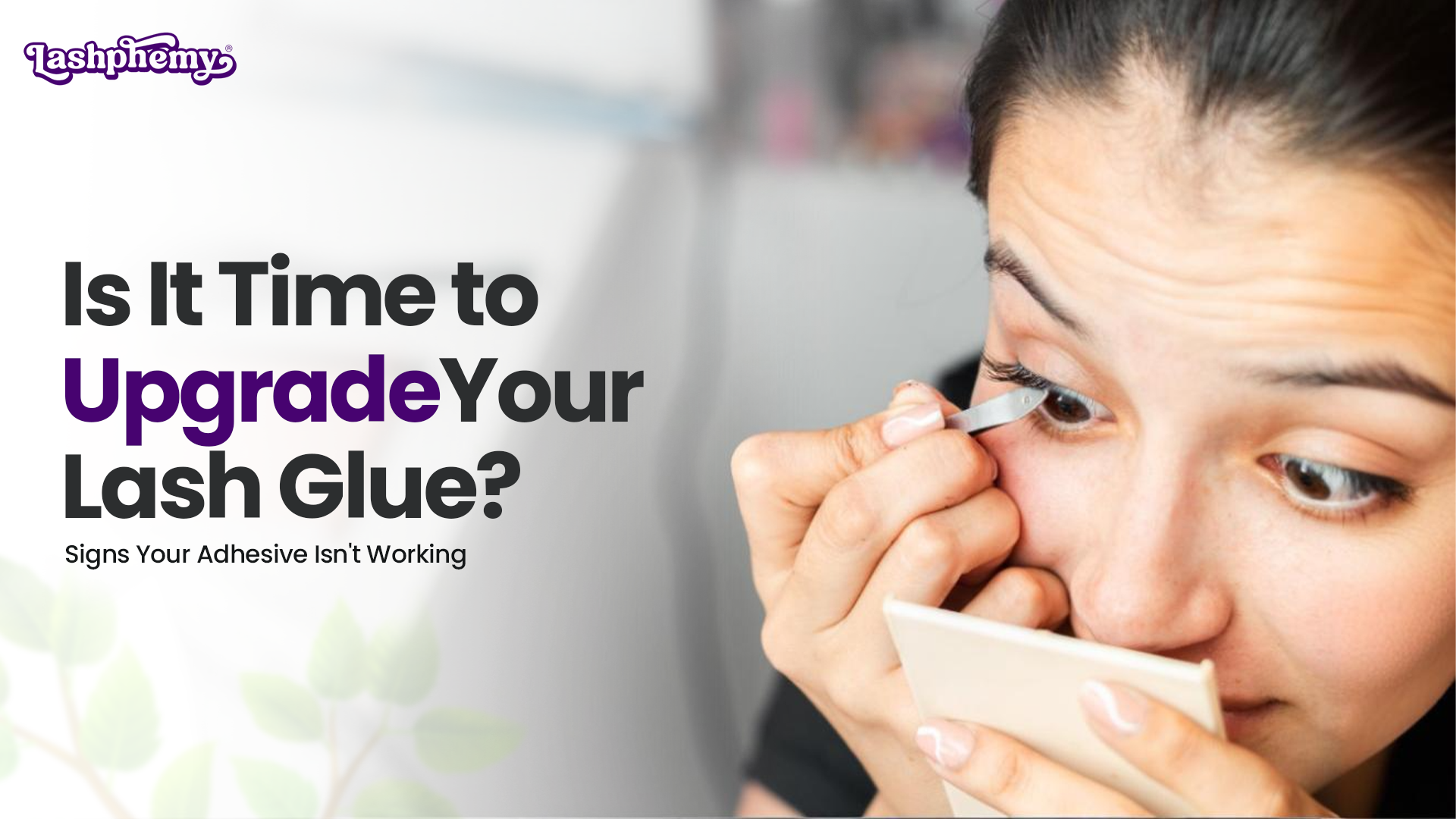
· By Carlee Workman
Is It Time to Upgrade Your Lash Glue? Signs Your Adhesive Isn't Working
When you do lash extensions, the glue you use isn’t just another product on your shelf; it’s what holds your entire set together. A reliable lash adhesive keeps your work looking fresh, helps lashes last longer, and keeps clients coming back happy. But even the best glue doesn’t stay perfect forever.
Maybe your technique has improved, or your salon’s environment has changed. Maybe clients are noticing more shedding or irritation. How do you know when it’s time to upgrade?
Let’s break down the real signs your lash glue isn’t pulling its weight anymore, the problems this can cause in your day-to-day work, and what you can do to keep your lash sets looking flawless and professional.
Sign 1: Extensions Aren’t Lasting
One of the biggest red flags is poor retention. If clients come back after just a week complaining of shedding, it’s time to question your lash adhesive. Good lash glue should hold extensions securely for several weeks under normal conditions. If it doesn’t, you might be working with an adhesive that’s either too old, not suited to your environment, or simply underperforming.
Solution:

Consider trying an adhesive with a formula that fits your technique and salon conditions. For example, Lashphemy’s Black Jack offers a fast dry time and strong hold, ideal for experienced artists who need speed and durability.
Sign 2: Excess Fumes and Irritation
If your clients start tearing up, feel burning, or you notice a sharp, strong smell during application, it’s a red flag. All lash adhesives release some fumes, but if it’s so strong that clients feel real discomfort, your glue might be old, stored the wrong way, or simply too aggressive for sensitive eyes.
Solution: Switch to a gentler option. Lashphemy’s Poker Face Clear Adhesive is formulated without carbon black, making it a great choice for clients with sensitivities.
Sign 3: Inconsistent Curing Time
Humidity and temperature affect curing, but if your lash glue dries too fast or too slow, no matter what you do, it might be mismatched to your salon’s environment or your skill level. This can lead to stickies, clumping, or extensions popping off during brushing.
Solution:

Beginners often find it easier to work with a slightly slower adhesive. Lashphemy’s Beginners Luck Black Adhesive offers more flexibility, so you can place lashes comfortably before the glue fully cures.
Sign 4: Visible Clumping or Whitening
Another common problem is "blooming,” a white cast forming on the lash line after application, usually because of excess moisture or glue reacting poorly. Clumping can also happen if the glue consistency changes, which often points to an expired or poorly stored product.
Solution: Always store your lash adhesive upright, away from heat and moisture, and replace it regularly. Upgrading to a fresh, well-formulated glue reduces the risk of blooming and keeps your sets looking clean.
Sign 5: Your Technique Has Evolved
If you started lashing slowly and now work faster, your old adhesive might not keep up. What once matched your speed may now dry too slowly, leading to poor retention or messy application.
Solution: Reassess your technique and pick a lash glue that complements it. Faster artists often choose quick-drying adhesives like Black Jack, while newer artists may benefit from slower-setting formulas.
Final Thoughts
Lash glue isn’t just a supply; it’s the backbone of every lash set. If you’re dealing with poor retention, client irritation, clumping, or inconsistent curing, it’s time to rethink your adhesive. Upgrading to a high-quality lash glue matched to your skill level and salon conditions keeps your work looking flawless and your clients coming back.
Are you ready to make the switch?
Shop premium lash adhesive from us and see the difference in every set. Your clients and your reputation will thank you.
